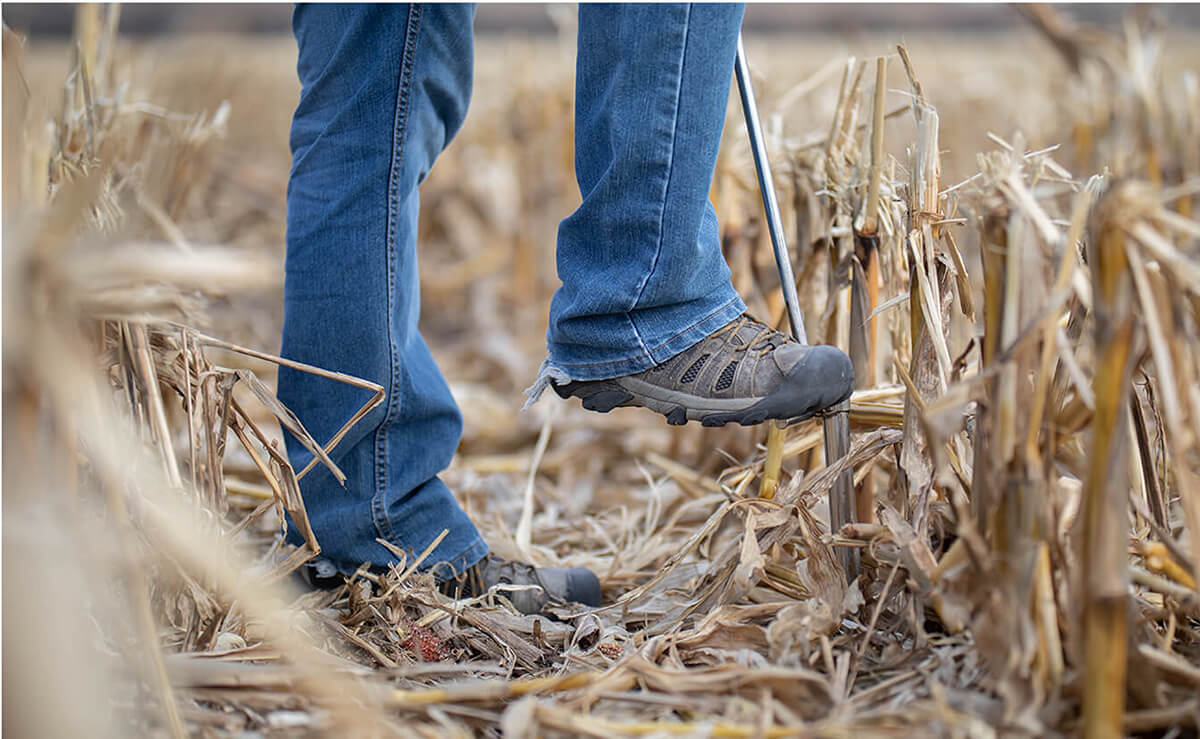
Tips for Successful Soil Sampling
For successful soil sampling, you must submit a quality sample into the lab. Below are some points to consider before heading out to soil sample.
Choosing a Soil Probe
Soil probes are available with 12-inch or 18-inch buckets. If you will be sampling in heavy clay soil, a 12-inch probe is recommended as sampling in a more compacted soil will result in a bent bucket.
Soil probes can be purchased directly from Ward Laboratories!
Sampling Depth
When determining a sampling depth, Ward Laboratories recommends taking samples from 0-8 inches. Interpretation guidelines are based on this sample depth. It is imperative to remain consistent when sampling. When sampling subsoil for mobile nutrients (nitrate, sulfate, and chloride), we recommend sampling to at least 24 inches.
Using Lubricants
When sampling in high clay or stickier soils, a lubricant may be helpful to get the soil out of the probe. For traditional soil tests, we recommend spraying a generous coat of WD-40 on the inside and outside of the probe bucket. If you are sampling for the Soil Health Assessment or other soil carbon tests, water soluble carbon forms in the lubricant are important to consider. We recommend using a silicon-based spray when sampling for the Soil Health Assessment to avoid polluting the sample with carbon.
Managing Variability
Sometimes we are aware of the historical management practices on a field, but on an unknown field it can be challenging to account for row spacing, fertilizer applications, and possible land leveling activities. Because of this, it is critical to take samples from within the row and between the rows and from multiple points throughout a sampling area. In some situations, grid or zone sampling may be appropriate if variable rate fertilizer application technologies are available and economical.
Dr. Nick Ward addresses this in further detail in this video.
Proper Number of Cores
As mentioned, soils are extremely variable; therefore, it is necessary to take as many cores as possible when sampling. For composite samples, Ward Laboratories recommends a sample represent no more than 40 acres. We also recommend pulling a minimum of 15-20 cores for each sample. For grid samples or zone samples, we recommend 8-12 cores per sample.
Sample Submittal
Soil samples may be air dried before submitting to the lab. Drop off or ship samples to the lab in a timely fashion. Submitting proper information along with your sample will ensure timely return of your results. Include your name, address, email address, phone number, and analyses desired. You may also include additional information such as past crop, crop to be grown, and expected yield goals. This will help the lab generate fertilizer recommendations. All of this can be recorded on one of our fillable login sheets.
Remember to consider these tips before heading out into the field for successful soil sampling. Proper sampling procedures and practices are necessary to obtain accurate results. The results coming out of the lab are only as good as the sample that was brought in!

1 Comment-
My mom just moved into a new home and she really wants to replicate the old garden that gave her a lot of vegetables. She had really good soil there, but the soil isn’t as good here, and she wants to make it work better. I’ll be sure to tell her about how she should take some samples within her field to get the right kind of sampling.